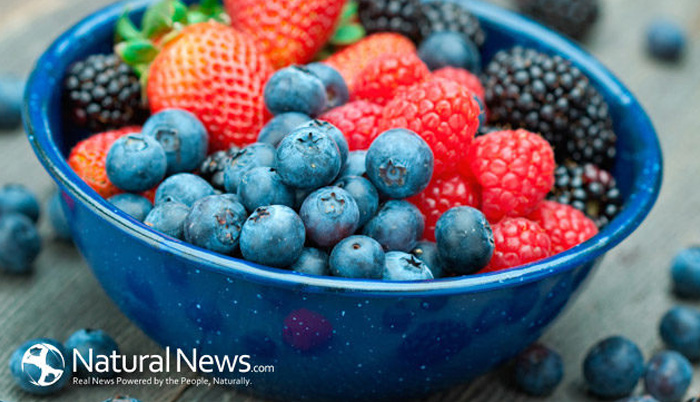![]() Home > Health
Home > Health
Glycemic Index And Glycemic Load: Should You Ever Worry About Them?

![]() February 14th, 2017 | 09:52 AM |
February 14th, 2017 | 09:52 AM | ![]() 706 views
706 views
NaturalNews.com
Should you ever be concerned about glycemic index or its glycemic load?
Low-carb diets, such as the Atkins, South Beach and Paleo will always emphasise the fact that high-glycemic foods raise your blood sugar and insulin, stimulating your appetite and promoting overeating and obesity.
Yet evidence now shows that glycemic index makes no difference to your weight and blood sugar levels.
What is the glycemic index?
The glycemic index (GI) measures the rise in blood sugar levels in a person over the two to three hours following the eating of an amount of food that contains 50g of carbohydrate.
Expressed as a percentage, the GI of pure glucose sugar is 100% while that of for instance of an apple is 39%.
Many mainstream nutritionists will tell you to eat foods that are low on the glycemic index for a more stable blood sugar level and to help heal health conditions, such as Candida and hypoglycemia.
But there is one big problem with the GI: it does not take into account the amount of carbohydrate in any particular meal.
So to make the GI more relevant to daily eating, the idea of the glycemic load or (GL) was introduced.
What is the glycemic load?
The GL figure is found by multiplying the GI of the food times the available carbohydrate content of a serving of that particular food and then dividing by 100.
So for example, a watermelon ranks as 72 on the glycemic index, which is classed as being high.
Taking a 100g serving size of watermelon, which has just 5g of available carbohydrates in it, its glycemic load or GL would be as follows: 72 x 5/ 100 = 3.6. So the GL is just 3.6 for a 100g serving of water melon.
So should eating certain foods with regards to them having a higher GI or GL values be of any concern to you and your health?
Well, the answer is no!
Let me explain why.
How quickly sugar enters the bloodstream is not actually the most important factor here and should not be something to be concerned about when eating healthy, natural, whole foods.
Why fruit is good for your healthy blood sugar levels
Another great aspect about the consumption of fruit is that it promotes the satisfaction of the appetite.
This is because the natural elevation of the blood sugar level after eating them is one of the key mechanisms that the human body uses to satisfy appetite and reduce food intake.
When you consume whole foods like fruits for example, they contain not only the carbohydrates that your body needs to be healthy, but also all the other nutrients essential to your health, including fiber.
Fiber slows down the absorption of sugar from the foods (whole fruits and vegetables for example) that you eat, into the bloodstream, which allows for the controlled and healthy release of the hormone insulin, that transports the sugar from your blood into your body’s cells.
Eating a healthy level of fat in your diet (but not high levels of fat) is also very important in this equation as it will allow for a healthy level of blood sugar to always be maintained.
It should be noted that dehydrated/dried fruits will contain much more concentrated sugars, which could cause blood sugar issues for some people.
The same goes with the drinking of fruit juices, which contain no fiber and so very quickly enter the bloodstream.
But for the average healthy person eating a healthy plant foods diet with plenty of fruit and low levels of fat in it, this should not be an issue.
The mistake low carb dieters and promoters are making is thinking that the GI and GL foods are actually relevant to a healthy way of eating.
At best the GI and GL are a nutritional curiosity and at worst a misleading and potentially health damaging way of looking at what foods we should or should not be eating.
If you want to live healthily and eat the best foods to support your body, then it is best to forget both the GI and GL and instead focus on eating healthy, natural whole plant foods together with a healthy level of fat in your diet.
This will naturally help bring you the health you deserve, including normal blood sugar levels.
There’s absolutely no reason to fear fruit!
Source:
courtesy of NATURALNEWS
by Yulia Tarbath
If you have any stories or news that you would like to share with the global online community, please feel free to share it with us by contacting us directly at [email protected]